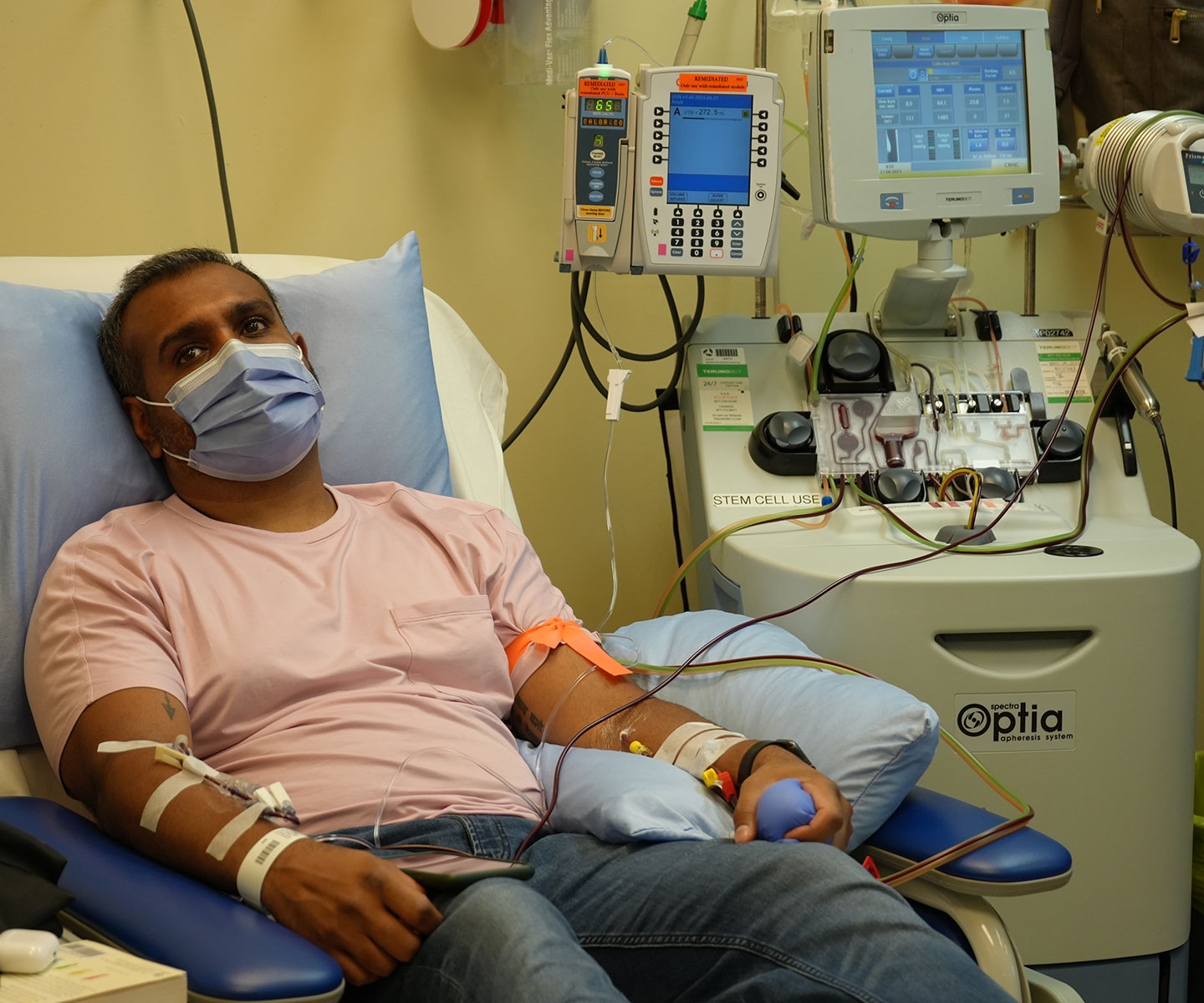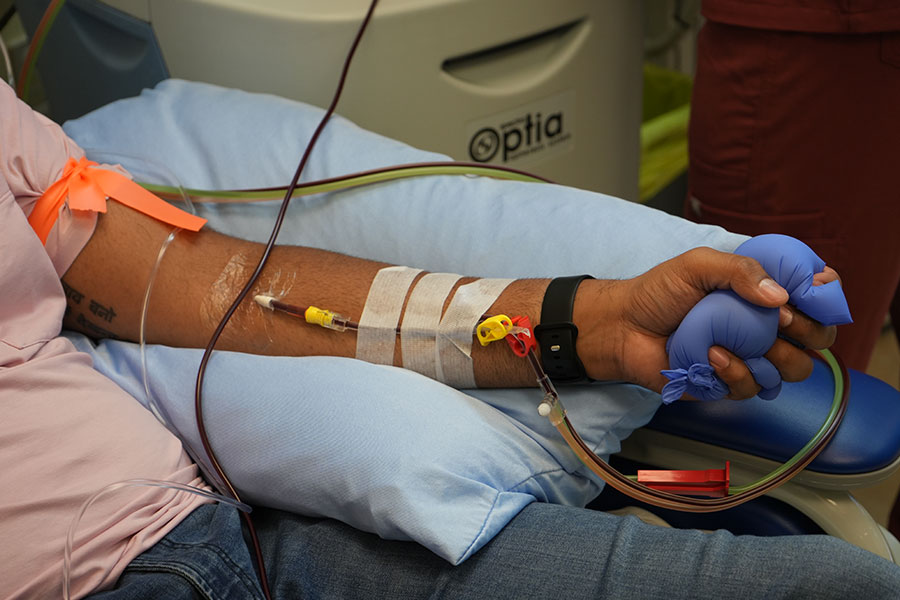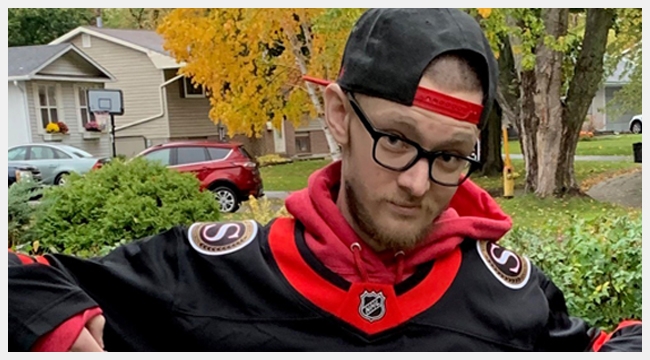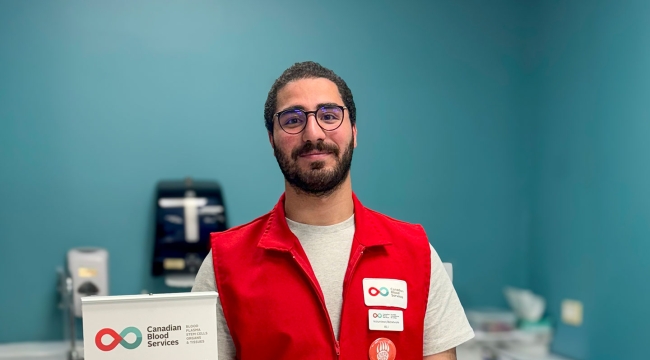Here’s what you need to know about donating stem cells: A guide

Donating stem cells can save a life
What are stem cells?
Stem cells are immature cells that can develop into any type of blood cell. They can become red blood cells which carry oxygen, white blood cells which fight off infections, or platelets which help control bleeding.
It’s important to know that these stem cells are not taken from an embryo — the earliest stage of human development before growing into a fetus — but reside in everyone’s bone marrow. The job of the bone marrow is to constantly replenish blood cells to keep you healthy and alive.
Why should I donate stem cells?
Right now, there are nearly 1000 people across Canada waiting for a life-saving stem cell transplant. A stem cell donation can treat more than 80 serious and life-threatening illnesses — including leukemia, lymphoma and other blood cancers.
When people need a stem cell transplant, it means that an illness has interfered with their bone marrow’s ability to produce new blood and immune cells. Those who undergo chemotherapy or radiation treatment may also need a transplant of healthy stem cells to help heal.
Most people assume that the family members may likely be a suitable stem cell match but in reality, only 25 per cent of people find a stem cell match within their family. Most of the time, those requiring a stem cell transplant rely on the kindness of a stranger of a similar ancestral or ethnic background for their stem cells.
Why does ethnic diversity play a role in stem cell donation?
People are more likely to find a stem cell match in a donor of similar ancestral or ethnic background and more than half of the people in need of a stem cell transplant do not have a suitable donor identified. Currently, people who are Black, Indigenous, Asian, Hispanic or mixed-race collectively make up only about a third of registrants. Having a stem cell registry that is as diverse as Canada ensures that people in need of a lifesaving stem cell transplant can find a match. That’s why we encourage people of all backgrounds to join the Canadian Blood Services Stem Cell Registry.
Donating stem cells is also not as scary as you might think. For the most common donation process, it takes a little more time and there are some medications to be taken in advance, but if you've donated apheresis platelets or plasma, the actual process of donating stem cells is not too different.

How do I sign up to donate stem cells?
If you're between the ages of 17-35 and are in good health, you can join the Canadian Blood Services Stem Cell Registry. The registry, with its connections to similar ones around the world, identifies matching stem cell donors for people in need.
Research shows that the best outcomes for people in need of a stem cell transplant often come from receiving stem cells from younger healthy individuals. However, if you join the registry, you can be called to donate up to age 60.
Once you have completed a short questionnaire and created an account, the next step is performing a cheek swab. By gently brushing this swab against the inside of your cheek, it gathers some of the cells in your mouth. These cells can then be tested for the select portion of your DNA that is required for stem cell matching.
“We're looking at a very small number of genes that determine the white blood cell groups, called the human leukocyte antigen or HLA system,” says Dr. Matthew Seftel, medical director for stem cells at Canadian Blood Services.
This HLA system is a genetic signature on our cells that controls the way our immune system functions and recognizes external threats. HLA determines whether the body’s defense system in the person receiving the transplant will be able to accept and work well with the stem cells from the person donating.
In the lab, your mouth swab is tested using a laboratory technique called polymerase chain reaction or PCR, a common method of characterizing DNA. This result is then stored in the secure Canadian Blood Services Stem Cell Registry database.
“In this database there is no other personal information of the donor that is visible to medical centres searching for a stem cell match. You cannot tell where that donor lives within Canada, and there are no names or contact details either,” Dr. Seftel says.
A potential donor on the stem cell registry is considered a match based on the similarity of their HLA result with the recipient. Only in the event of this match are a limited number of people who manage the stem cell registry at Canadian Blood Services able to connect the donor in the database with their personal details such as name and contact information.
What if I’m a stem cell match?
Congratulations! You have the chance to save a life. First, we check if the matching registrant is still interested in being a stem cell donor and that they continue to be in good health. Years can pass between registering to donate and being called upon as a match for someone in need. So, we always confirm that the registrants are still interested and available to give their life-saving gift. Registrants can leave the registry at any time.
How do I prepare for the donation?
It may come as a surprise that only about 20 per cent of donors are asked to donate bone marrow, a surgical procedure where stem cells are collected from the back of the hip bones. For most, the process is done by apheresis where blood is drawn from the body, the blood stem cells removed, and the remaining blood components returned to you. It doesn’t require surgery and feels similar to donating plasma, or platelets.
The apheresis procedure for donating stem cells does require some preparation. Over four to five days the donor must administer a medication called Granulocyte Colony Stimulating Factor or GCSF.

“It's injected into the fat layer directly under the skin of the donor, usually on the belly or thigh,” Dr. Seftel says. “It's similar to an insulin injection. It's a very tiny poke under the skin.”
GCSF is a naturally occurring substance in our bodies, but donors receive a slightly higher amount to temporarily increase the number of healthy stem cells in the bloodstream. We can then collect these stem cells using the apheresis procedure.
Donors typically experience flu-like symptoms after administering the GCSF medication but these go away very rapidly once GCSF is stopped and the collection procedure is completed. Pain medication may help with the effects of these symptoms.
What is the stem cell donation process like?
On donation day the donor will arrive at the collection centre based at one of the seven transplant centres in Canada. We ask that they have a friend or relative drive them just in case they’re still feeling symptoms from the GCSF or are taking pain medications.
They meet with the medical staff who can answer any remaining questions the donor might have and run a final blood test to make sure that the GCSF medication has been effective, with right number of blood stem cells in the bloodstream. Then they’re ready to go.
A small needle is inserted into the veins of each arm — just like with a plasma or platelet donation. Blood is drawn from one arm, the apheresis machine separates out the stem cells, and returns the remaining blood back to the donor through the other arm vein.
During the donation process the donor is awake and feeling well enough to chat, snack, read, and maybe even watch a movie. Maybe even two movies, as the apheresis procedure can take from three to six hours. The length of the procedure depends on the size of the donor as well as the size and needs of the person receiving the stem cells.
The donation process is safe, and no costs are incurred by the donor. If a donor must go to another city or province for the stem cell donation, their travel, food, accommodation, and other costs are covered by Canadian Blood Services.
What does it feel like after you donate?
It is important to know that the bone marrow continuously produces new blood stem cells, so those removed through the donation process are quickly replaced by the body.
Once the procedure is complete, donors are given instructions not to drive home on their own and to take some pain medication if needed. They are also given a contact number for a medical professional in case they have any unexpected problems. Most donors feel well enough to resume their normal activities the day after donating.
At a later stage, some donors are able to meet the recipients of their stem cell donation provided that both donor and recipient agree. That connection can be a really special experience. Even donors who don’t meet their recipients are glad to have made this donation knowing they have saved or improved someone’s life.
“For the majority of donors, they are immensely satisfied with the procedure of donating blood stem cells to a person in dire need,” Dr. Seftel says.

